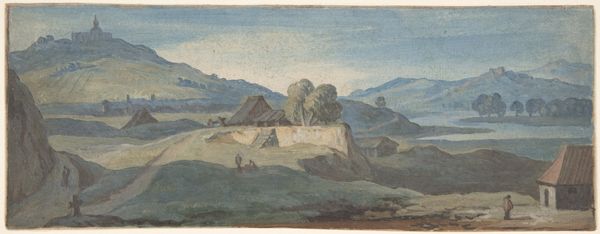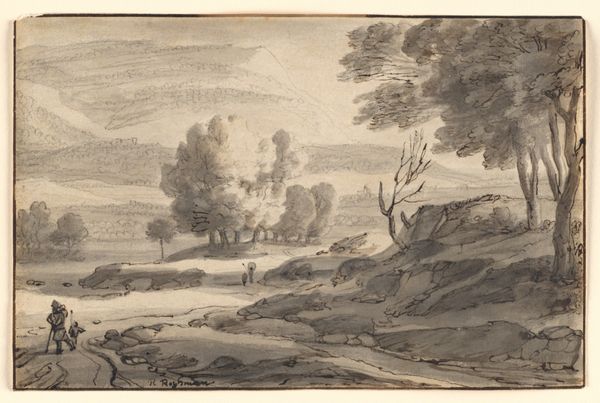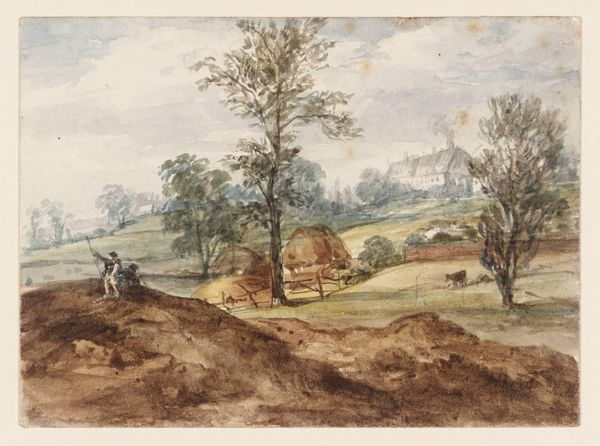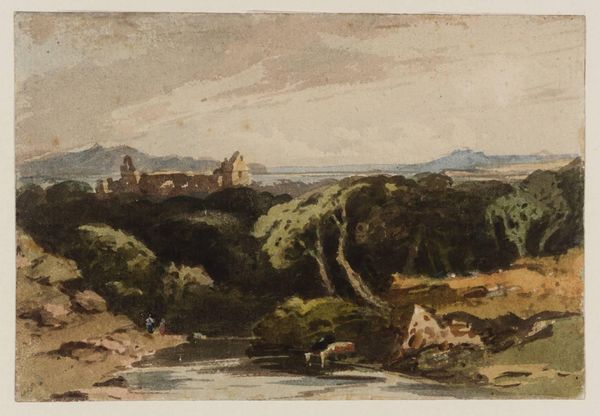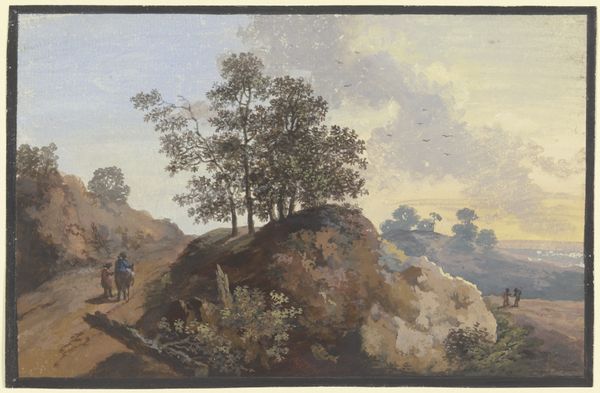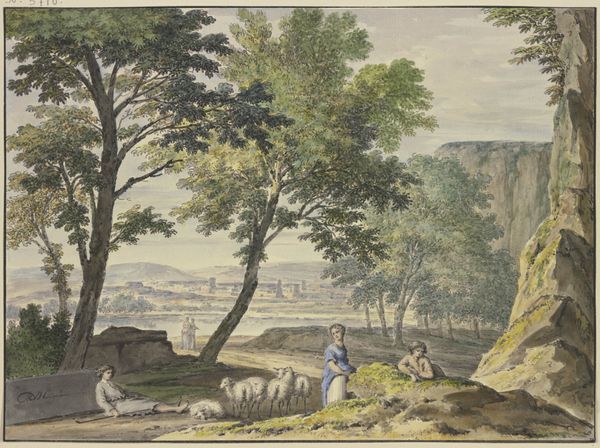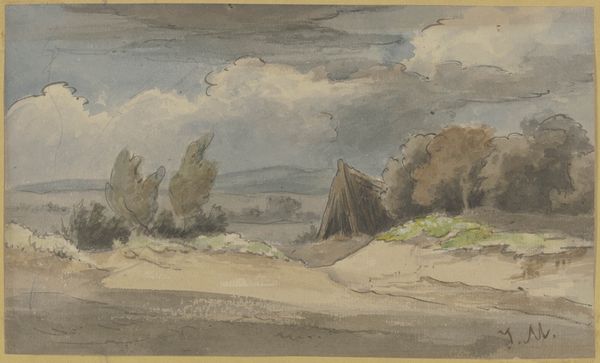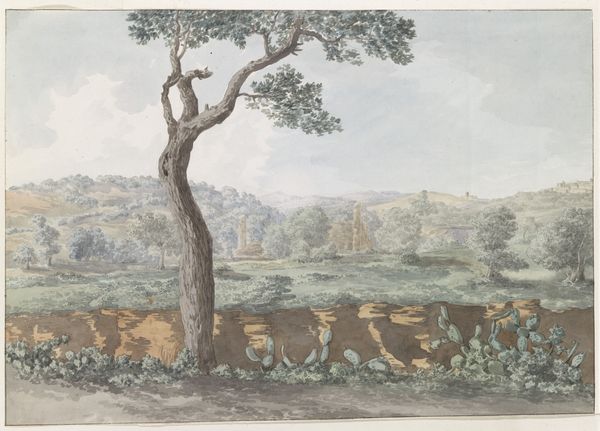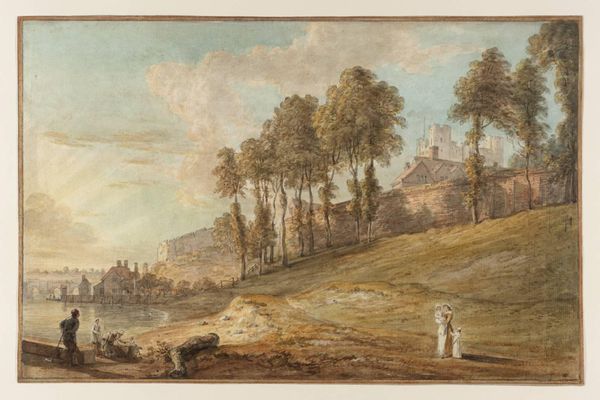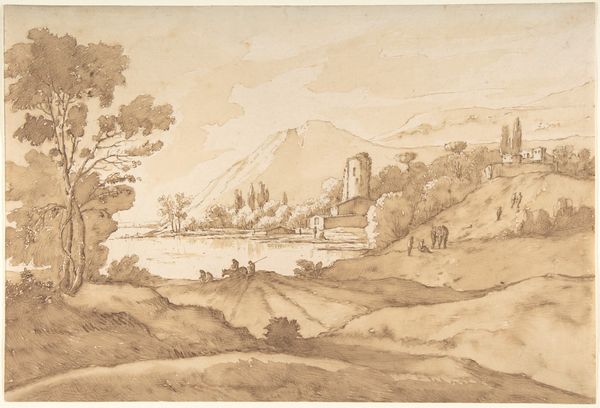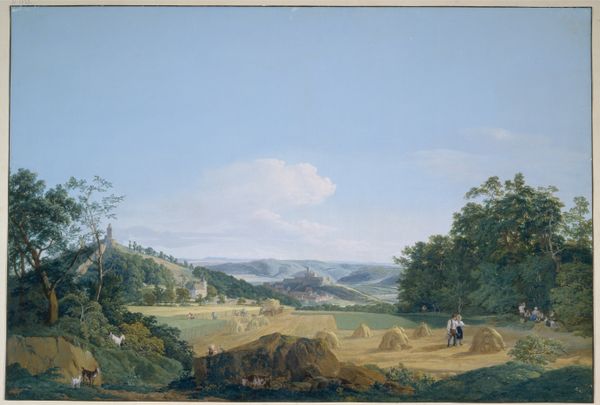
tempera, plein-air, watercolor
#
baroque
#
tempera
#
plein-air
#
landscape
#
watercolor
#
watercolour illustration
#
watercolor
Dimensions: 3 5/8 x 9 1/8 in. (9.2 x 23.2 cm)
Copyright: Public Domain
Curator: Immediately, I find this work strangely calming. The subtle gradations of blues and greens wash over you like a gentle, if slightly melancholic, daydream. Editor: Indeed. We're looking at "Landscape," a tempera and watercolor piece by Jan Frans van Bloemen, who was active between 1682 and 1749. It's part of the Metropolitan Museum's collection in New York. Its formal structure exhibits a compelling recession into space, achieved through careful manipulation of color density. Curator: Color density? Are we talking about a painterly fog? It really does feel like I'm peering through mist at some ancient, almost mythical, scene. And that tiny figure on the left, carrying what looks like a staff—he's like a character from a forgotten folk tale. Editor: Note how the planar construction utilizes both earth tones in the foreground and cooler hues in the distant hills to create depth. The subtle blurring of the town in the mid-ground, partially obscured in the distant hills, evokes an idealized pastorality so typical of the Baroque landscape tradition. The figures, almost incidental, emphasize scale and our relationship to it. Curator: Pastoral tradition. Right. But beyond the structure, there's an almost theatrical quality here, like a stage set for a very quiet drama. And look at those trees along the river; they're mirrored perfectly in the water, creating an eerie symmetry. Did Bloemen ever consider stage design? Editor: The Baroque certainly embraced theatricality across art forms. I wouldn't be surprised! Ultimately, in examining Bloemen’s artistic technique within this work, the interplay of plein-air influences and calculated composition exemplifies how landscapes can both mimic and improve upon natural observation, serving, then, as more than mere mimetic representation. Curator: So, not just pretty pictures then? More like reflections on how we perceive beauty, even fabricate it through memory and art? I love it. Editor: A thought-provoking consideration indeed. The subtle interplay between reality and artifice remains relevant to modern modes of visuality, demonstrating a timeless quality that belies its specific Baroque origins.
Comments
No comments
Be the first to comment and join the conversation on the ultimate creative platform.
